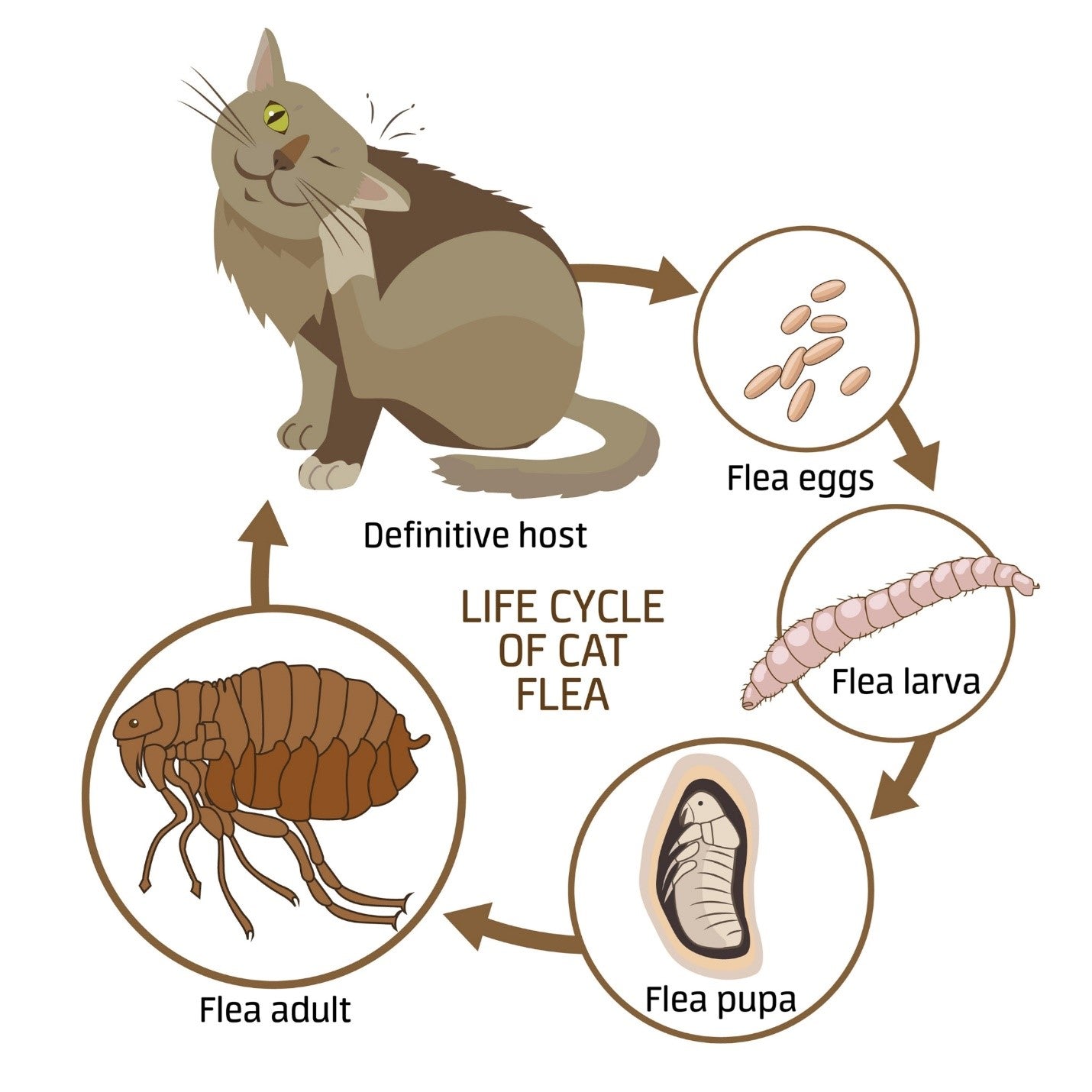
Banishing Fleas from Your Lawn: Top Strategies for Flea Control in the Yard
Pet owners know all too well the battle for flea control is neverending. These biting pests are not only difficult to eradicate, but they also breed quickly. If you don't stay on top of flea control for your yard, you may end up with an infestation inside your home. Before blaming your pets, you may want to know more about fleas, their lifecycle, and ways to keep them from setting up permanent residence. MosquitoNix® is your trusted resource forpest control services, and we have helpful tactics to make your yard less hospitable to fleas. Here are our eight tips for yard flea control that go beyond flea and tick yard spray.
What's the Big Deal About Little Fleas
Why should you care about fleas, anyway? Isn't it more something that affects your pets? Fleas may not be much to look at, but they can spread diseases like other common bloodsuckers and mosquitoes. Fleas are small flat parasites that survive on blood, and while they are wingless, they can jump as high as eleven inches.
In their short 100-day lifespan, female fleas can lay up to about 2,000 eggs. Just imagine how many fleas that can turn into in a matter of weeks. Fleas can carry tapeworms, cat scratch fever, typhus, and, seriously, bubonic plague. Once these pests enter your home, they can set up housekeeping in your carpet, upholstered furniture, bedding and other soft, comfy places where you and your pets like to sit, sleep or snuggle.

Why They Like Yards, Pets, and People
Like many insects, fleas are opportunistic little buggers. They like residential yards because they have a steady food supply, including pets, humans and wildlife. They thrive in warm, humid weather and prefer shady, hidden spots like overgrown grass. If you aren't sure if you have fleas in your yard, look at your pets. Are they scratching constantly? Do they have small brown things crawling around on their skin? Another surefire way to tell is to walk around the yard in tall white socks; chances are good that if fleas are around, they will hitch a ride on your clothes. Be sure to take those socks off before you come inside.

How To Control Fleas in the Yard
Now that you know what you're up against, lets' get down to tips for effective flea control for the yard. You can try any of these or a combination of approaches for best results:
1. Mow At The Right Height: Mowing your grass regularly disrupts the fleas' favorite hiding place. The trick is to mow it at the right height. If you cut your grass too short, you may disrupt spiders that live there, and spiders like to eat fleas. Leaving your grass too high doesn't deter fleas that prefer taller grass anyway. Talk to your lawn service provider or a landscaping expert for their mowing height recommendations based on your grass type.

2. Avoid Overwatering: Remember, fleas love the moisture. When you water too often, you can end up with standing water closer to the soil, providing a perfect breeding ground for fleas and their cohorts, mosquitoes. You may not even realize how much water your yard retains, especially if you have a thick layer of lawn thatch.
3. Remove Lawn Thatch: That layer of thick leaves, blades of grass, stems and other organic matter is essential to maintaining an even soil temperature and moisture level, but too thick, it also invites fleas to breed. Again, talk to your lawn expert about how much thatch benefits your grass.
4. Clear The Area: Fleas like to hide in undisturbed areas, and what's more undisturbed than piles of brush, leaves and other debris around your trees and bushes? Remove that excess organic material and clean up your plant beds to discourage fleas from setting up a colony.
5. Mulch With Cedar: Fragrant cedar mulch is worth the expense if it makes your property less inviting to fleas. They cannot stand the smell, so much so that they may forego your yard. Spread it to create a barrier around a porch or patio and under trees and shrubs next to the house.
6. Discourage Wildlife: You and your pets aren't the only food source in the yard. Backyard wildlife, including squirrels, chipmunks, mice, raccoons, opossums, coyotes and stray cats all provide a steady food supply for fleas. Some of these other flea control suggestions may also keep wildlife from squatting on your property.

7. Consider Alternatives: If you want to avoid pesticides, look for natural solutions to flea treatment yard sprays. Evidence suggests that nematodes, microscopic worms that live in soil, are natural-born flea killers. Get your soil tested to see if you have nematodes present, or purchase a supply at a garden store or online and spread them yourself. Another option is diatomaceous earth for fleas. This fine powder, made from fossilized remains of aquatic organisms, damages a flea's exoskeleton and dries out its eggs.
8. Go With Professional Flea Treatment for The Yard: the other suggestions take time and effort to do away with fleas. For a quick and easy solution, leave it to the fully trained and licensed professional pest control experts at MosquitoNix. Our pest control solution, paired with treatments recommended by your pet's veterinarian and lawn care, may be the one-two punch needed to knock out fleas for good this season.

To learn more about effective flea repellents for yards, contact MosquitoNix online or at our nearest local office. We have locations in over 500 cities and nine countries to serve you. Our team can create a custom pest control service plan to make fleas, ticks, mosquitoes and other backyard pests a distant memory.
Leave a comment
Comments will be approved before showing up.




